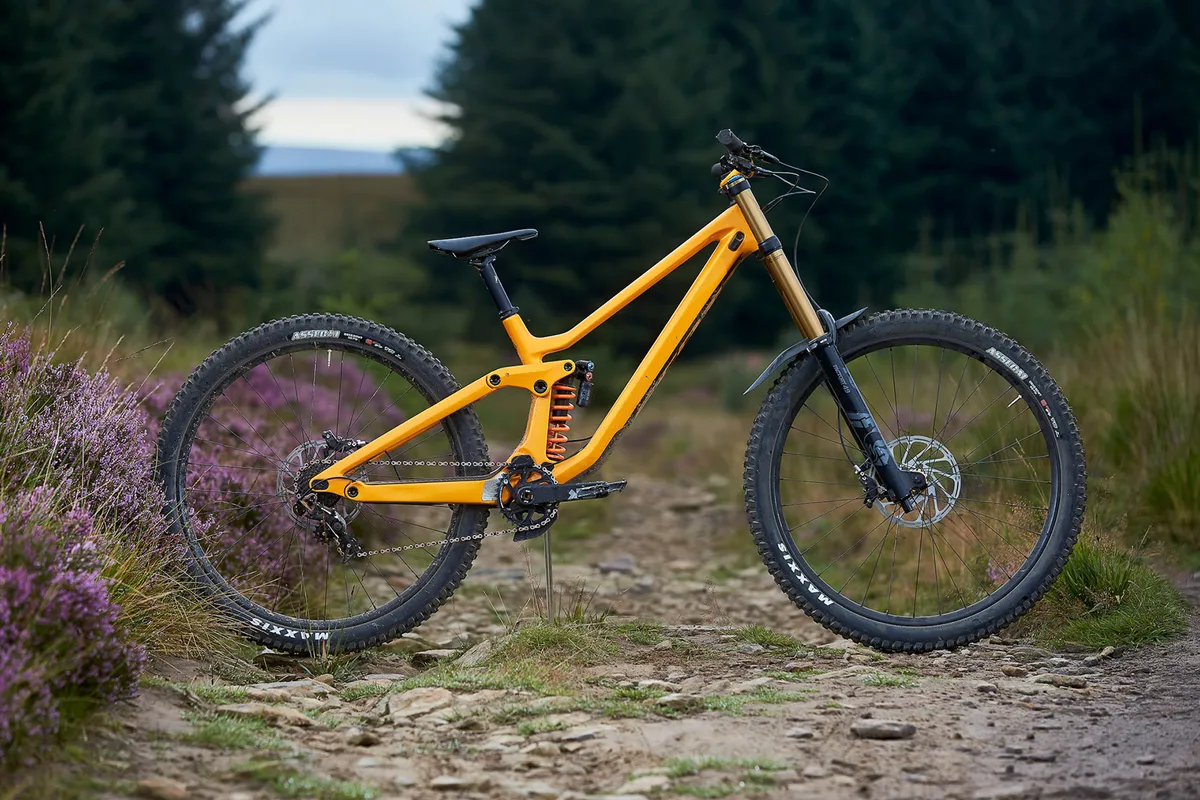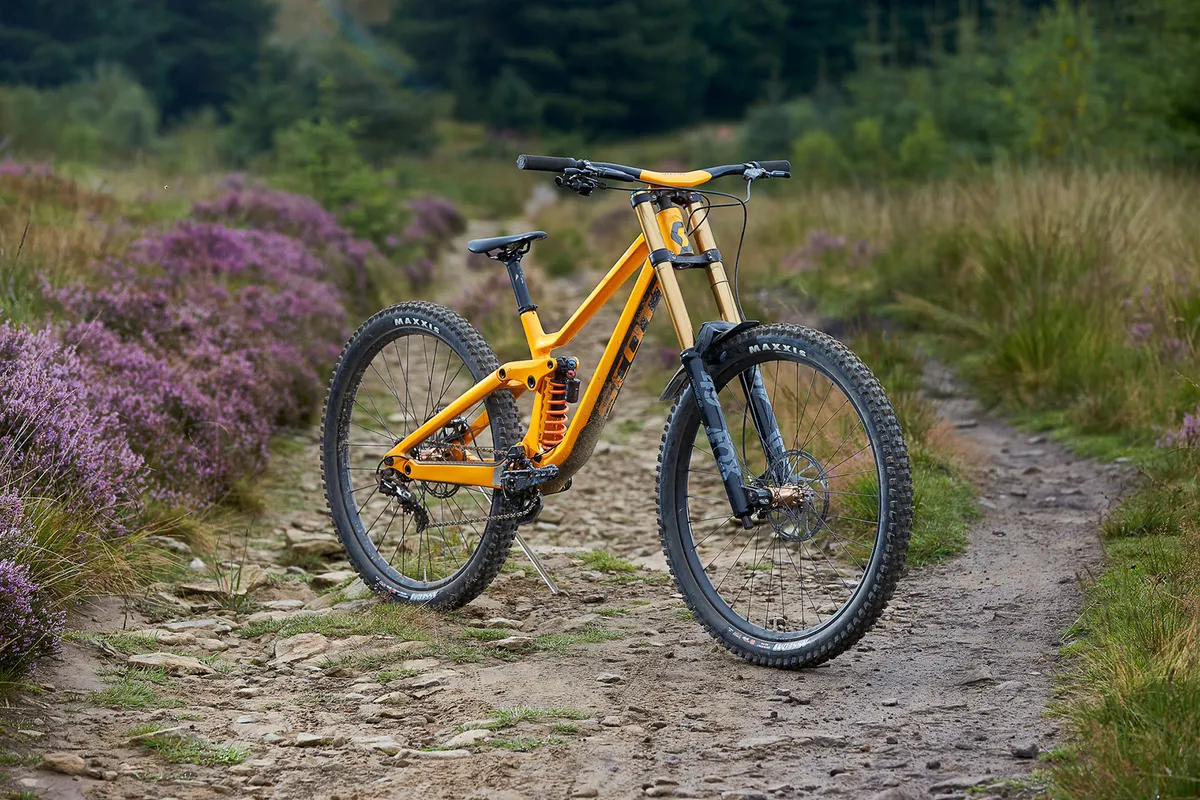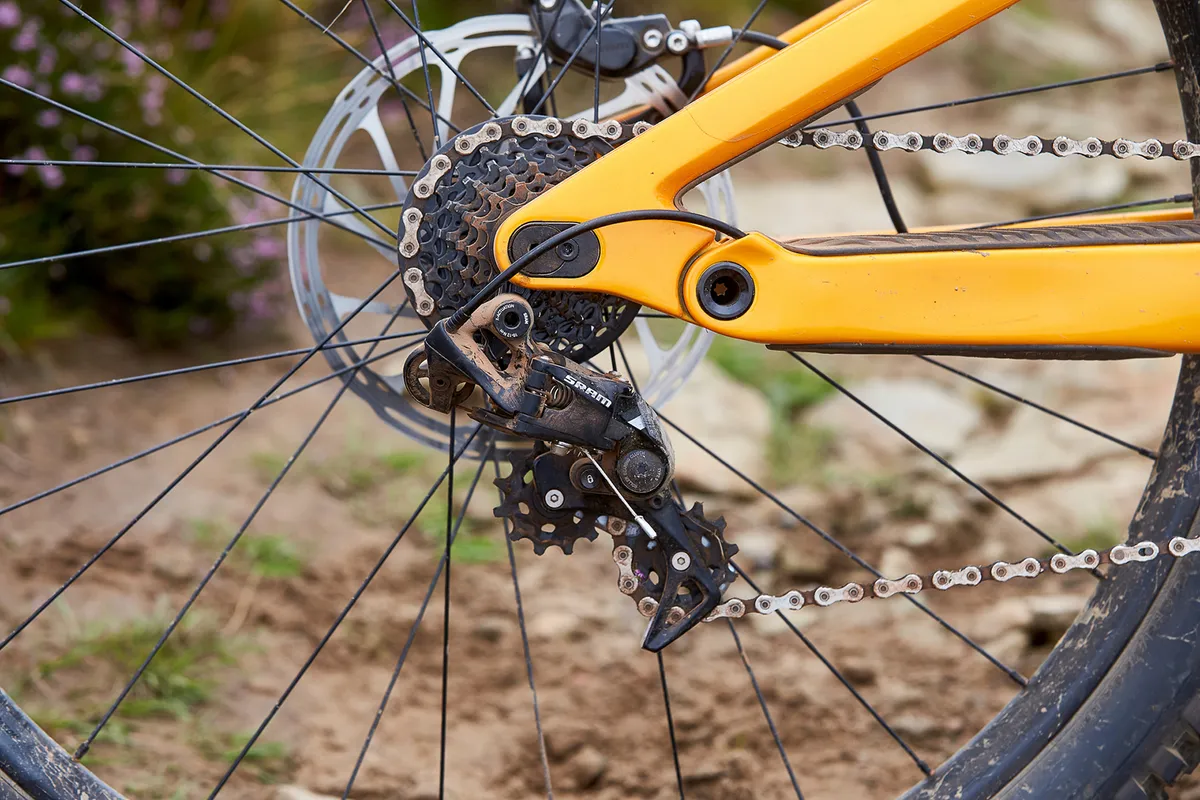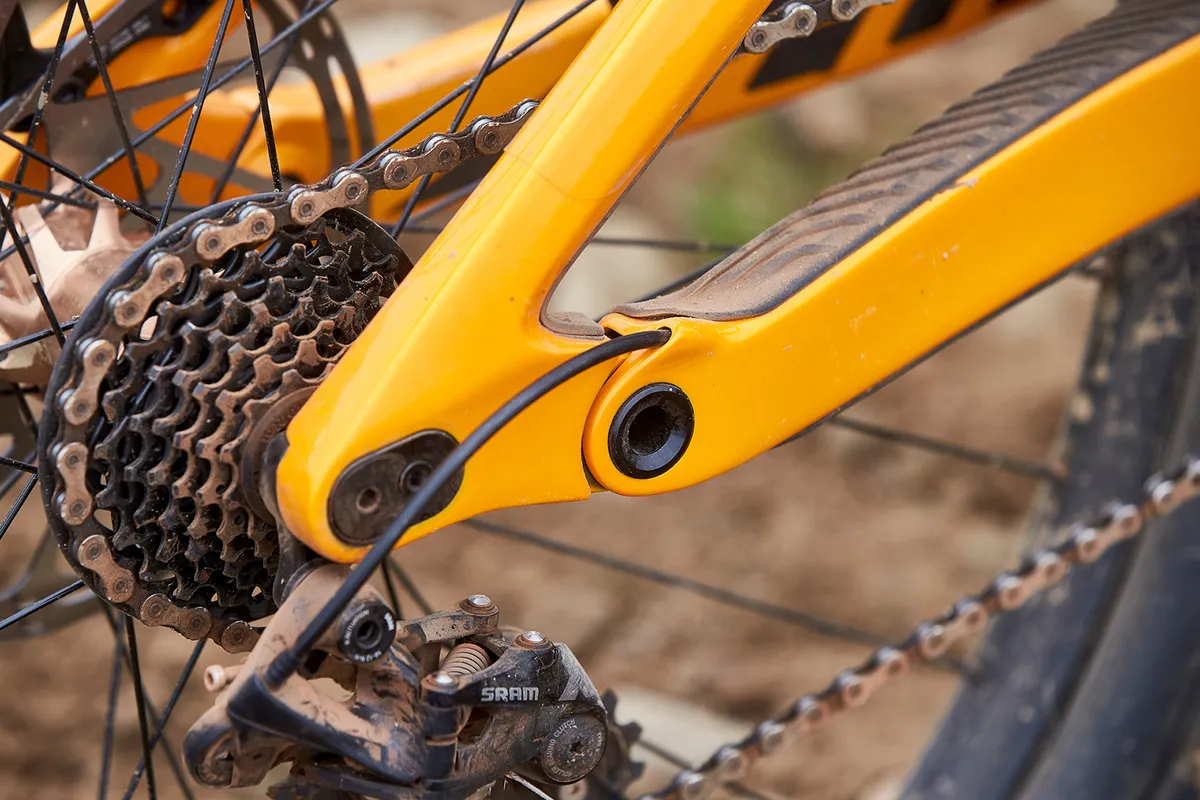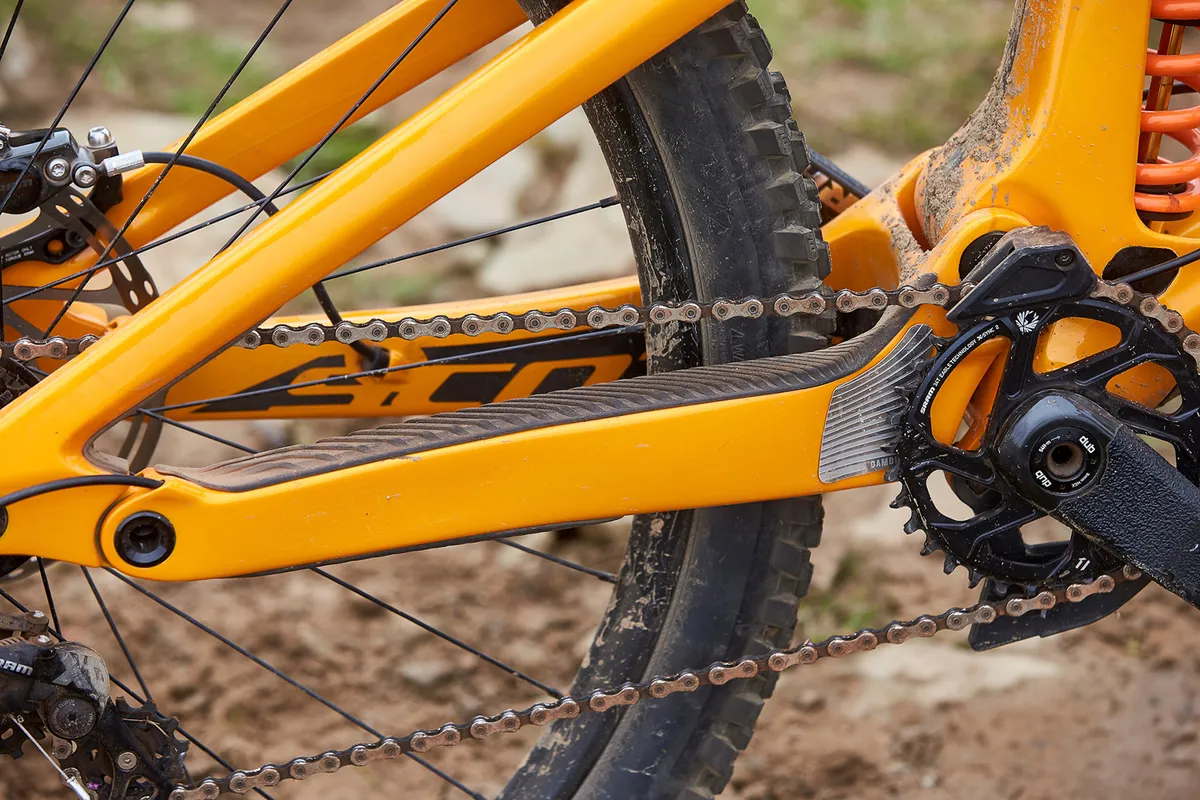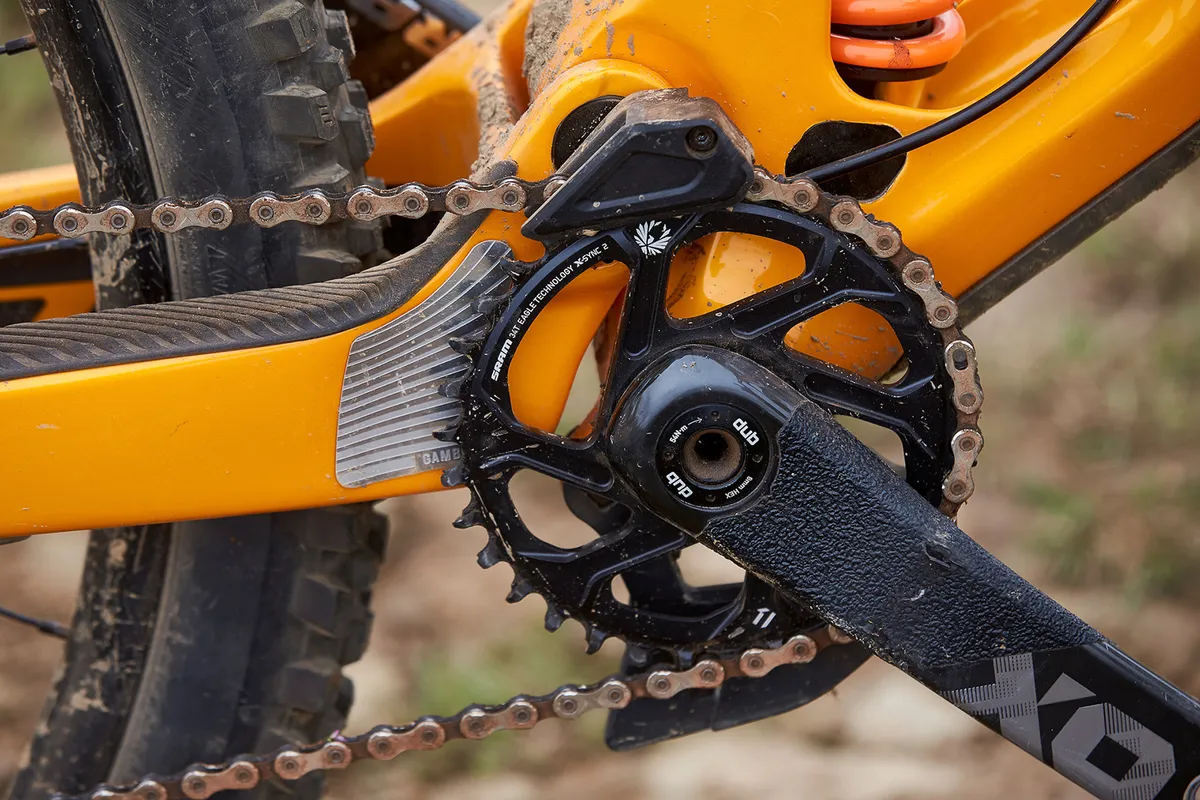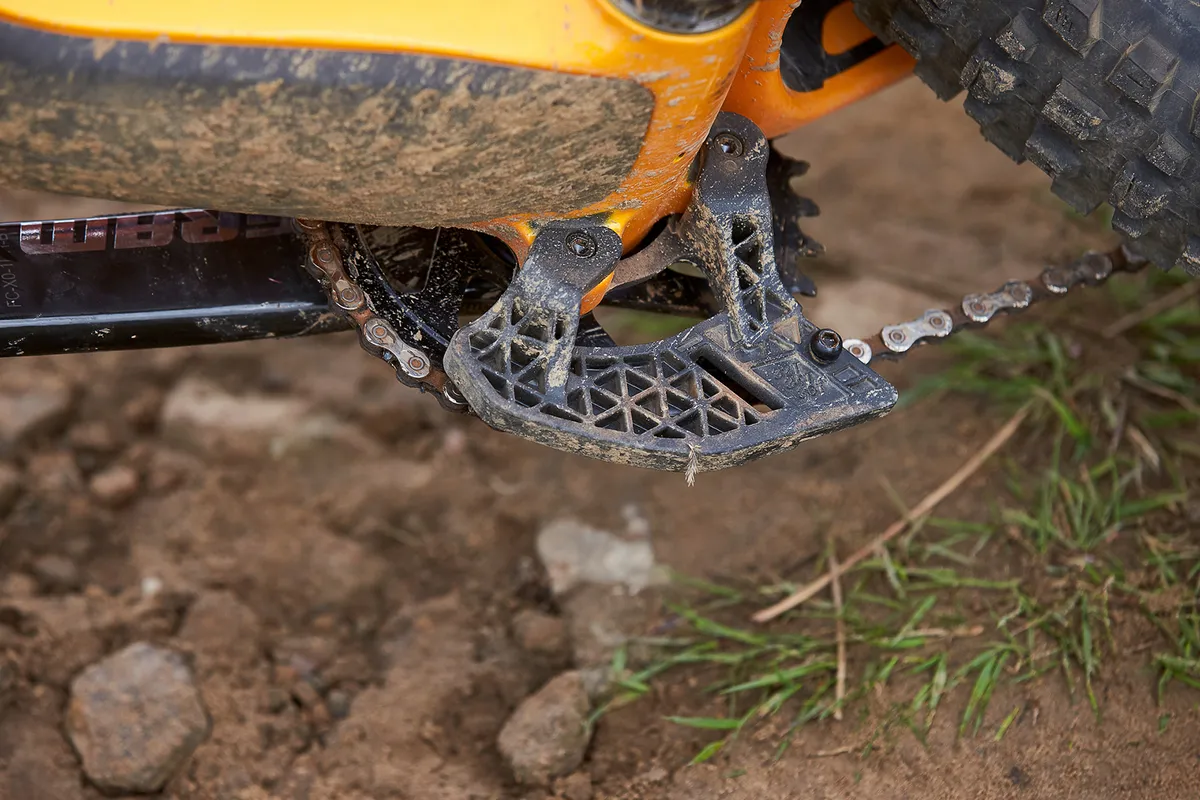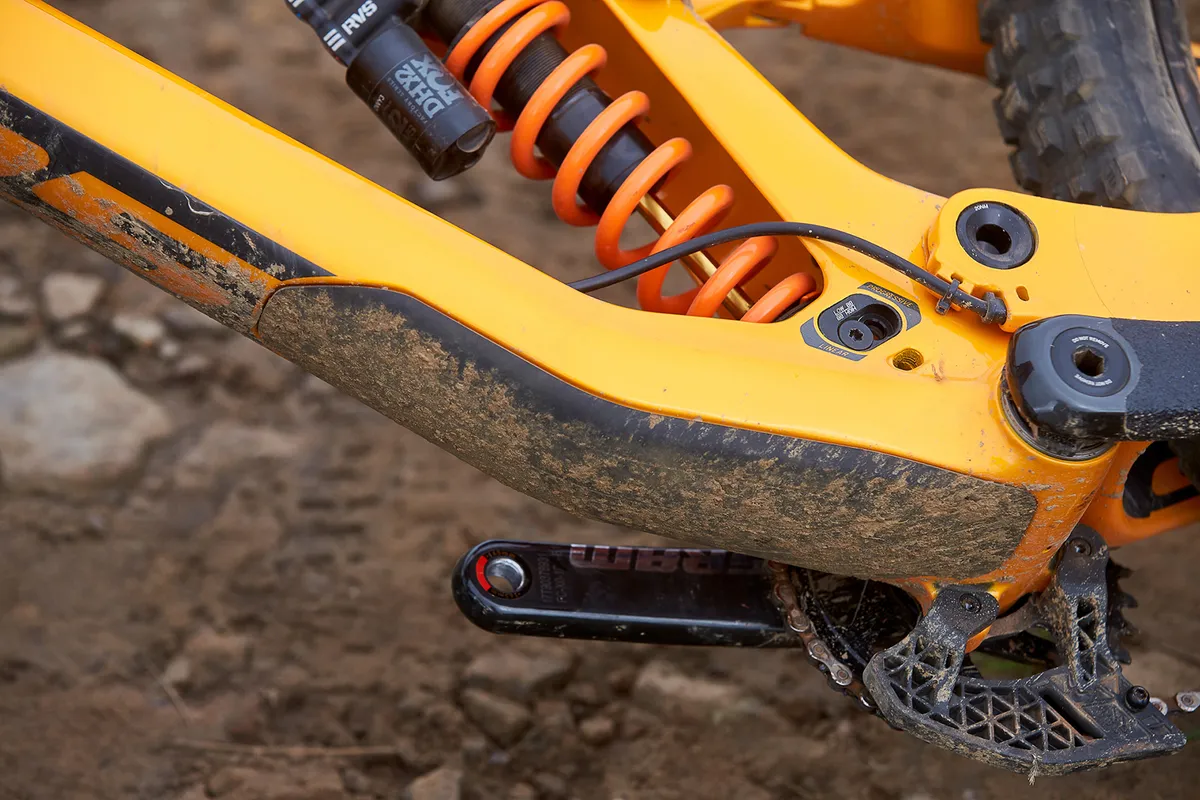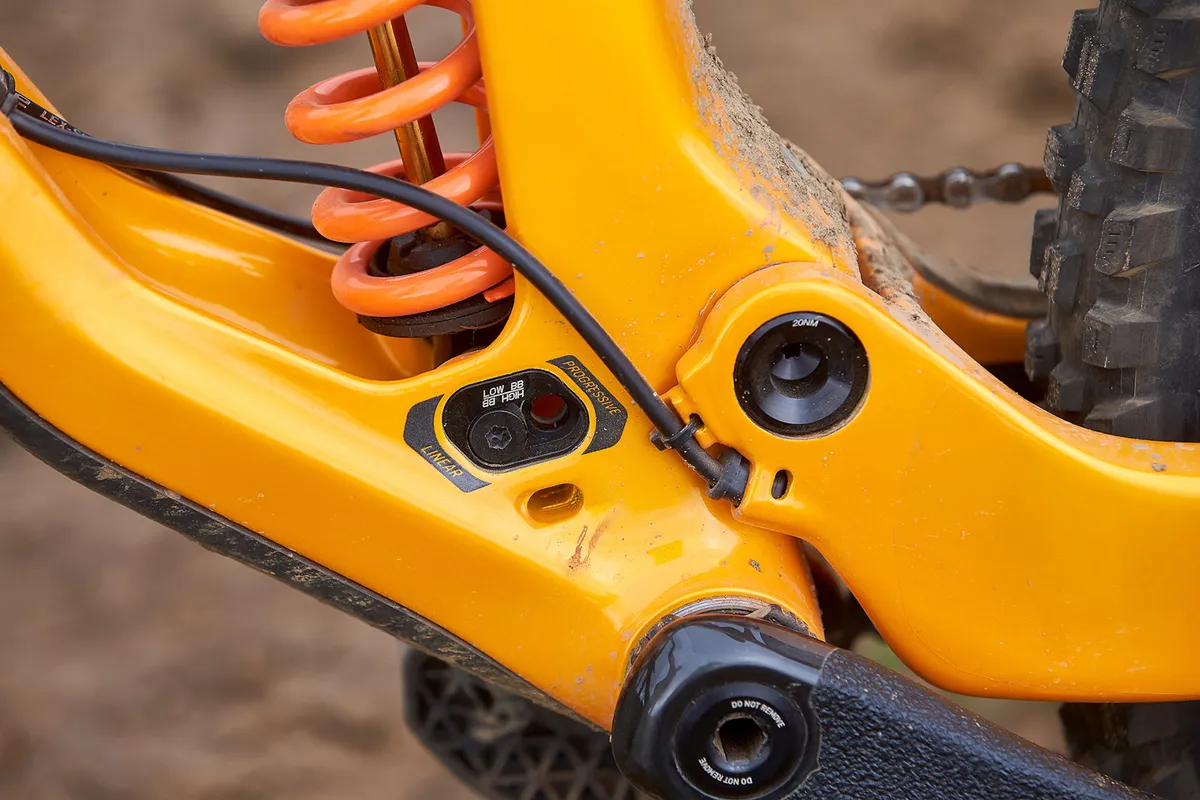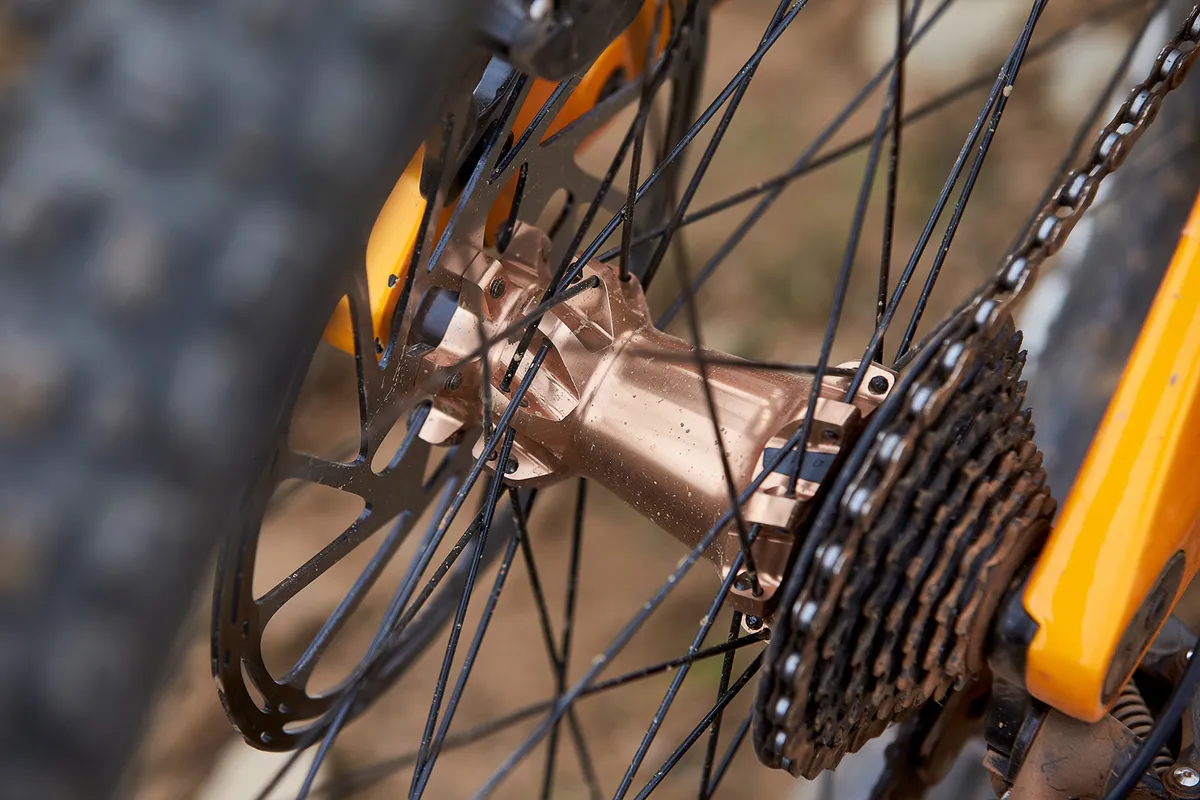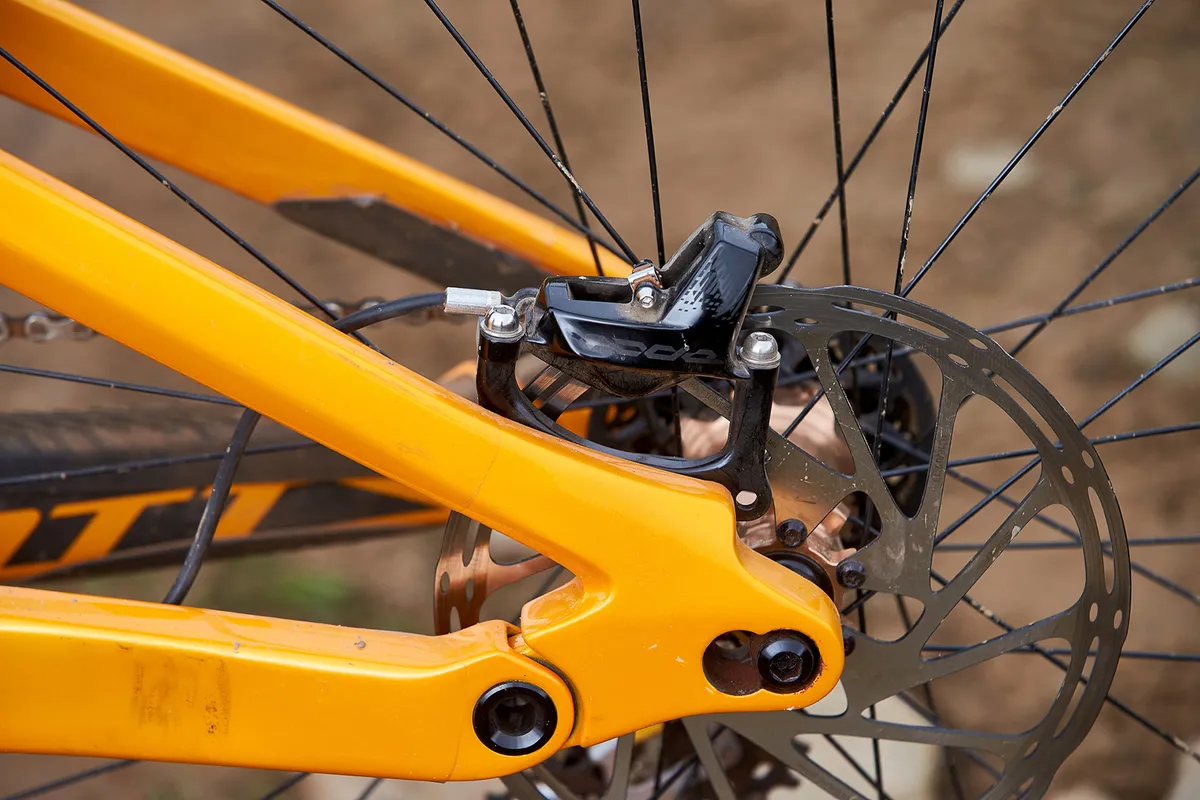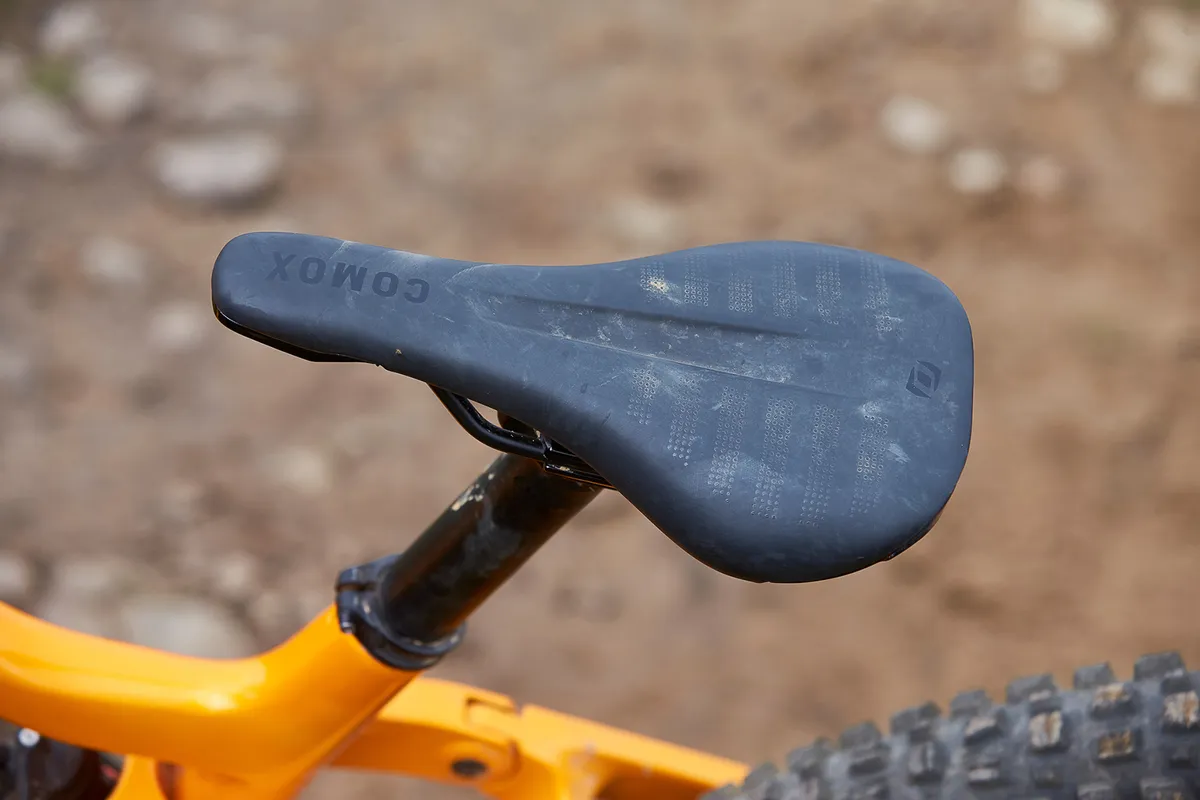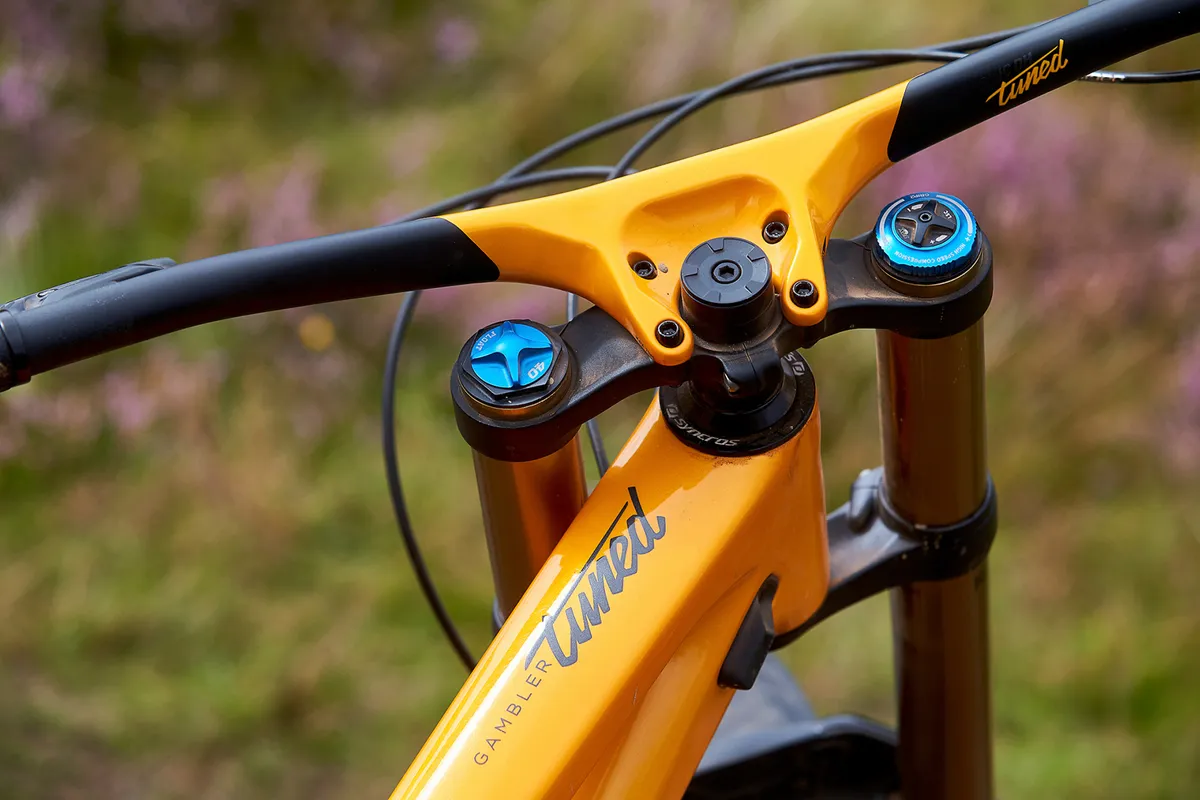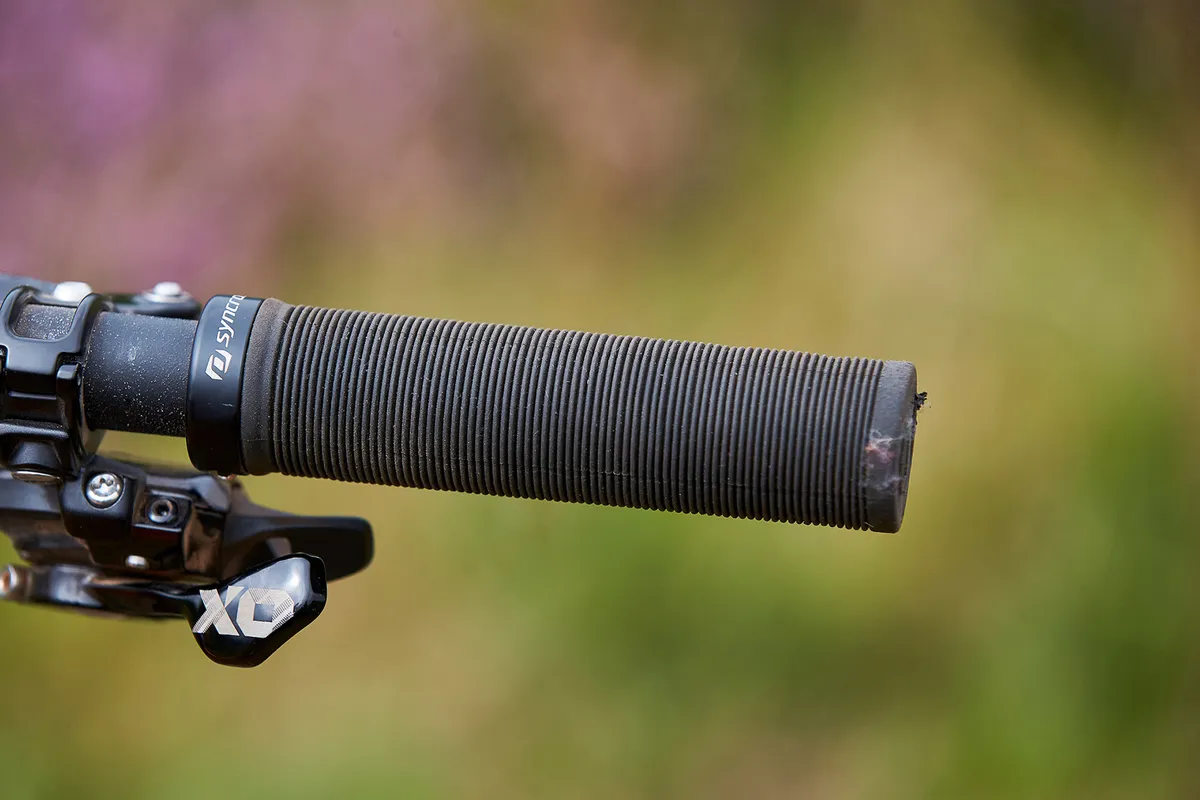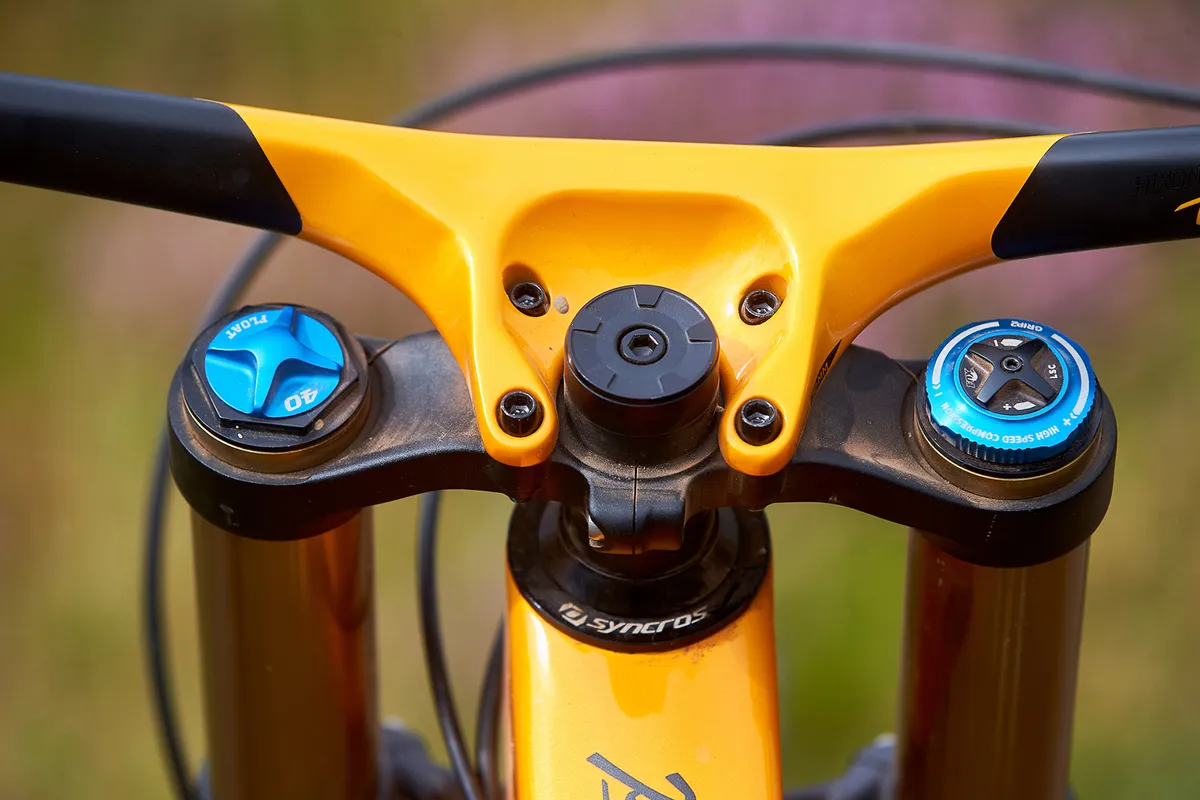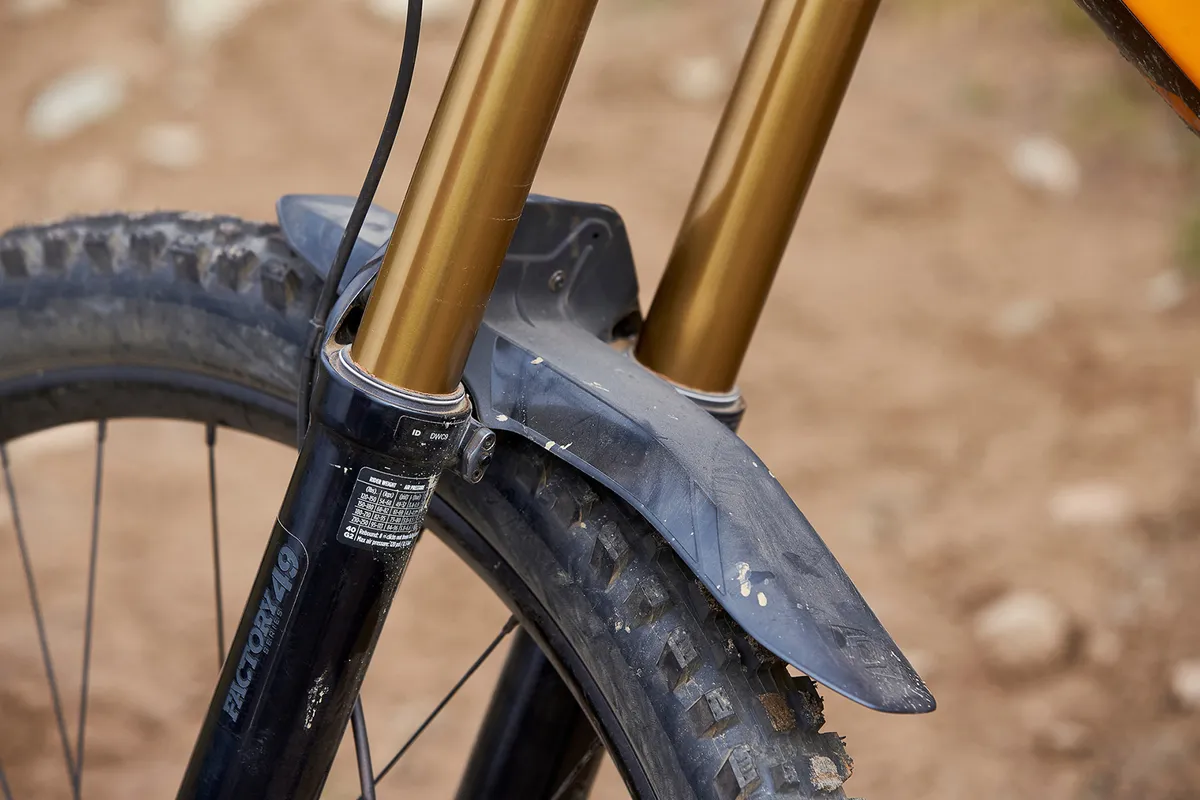Having ridden the Gambler of old and enjoyed its adjustable and, quite frankly for the time, rather extreme geometry, it’s nice to see Scott not reducing the amount of user-adjustability on its new bike.
We first got a look at the Scott's new carbon fibre superbike, the 2020 Gambler 900, back in July, and it would be fair to say that first impressions were positive and the bike’s aesthetic impressed us.
Then Scott released hybrid (carbon front end, alloy rear) and full-alloy versions of the bike to appeal to those with a little less cash. Scott told us that the alloy bikes aren’t just copies of the carbon model in another material, instead having been designed from the ground-up to have their own personality and ride feel while maintaining all of the range-topper’s adjustability and features.
Scott Gambler 900 Tuned 2020 details
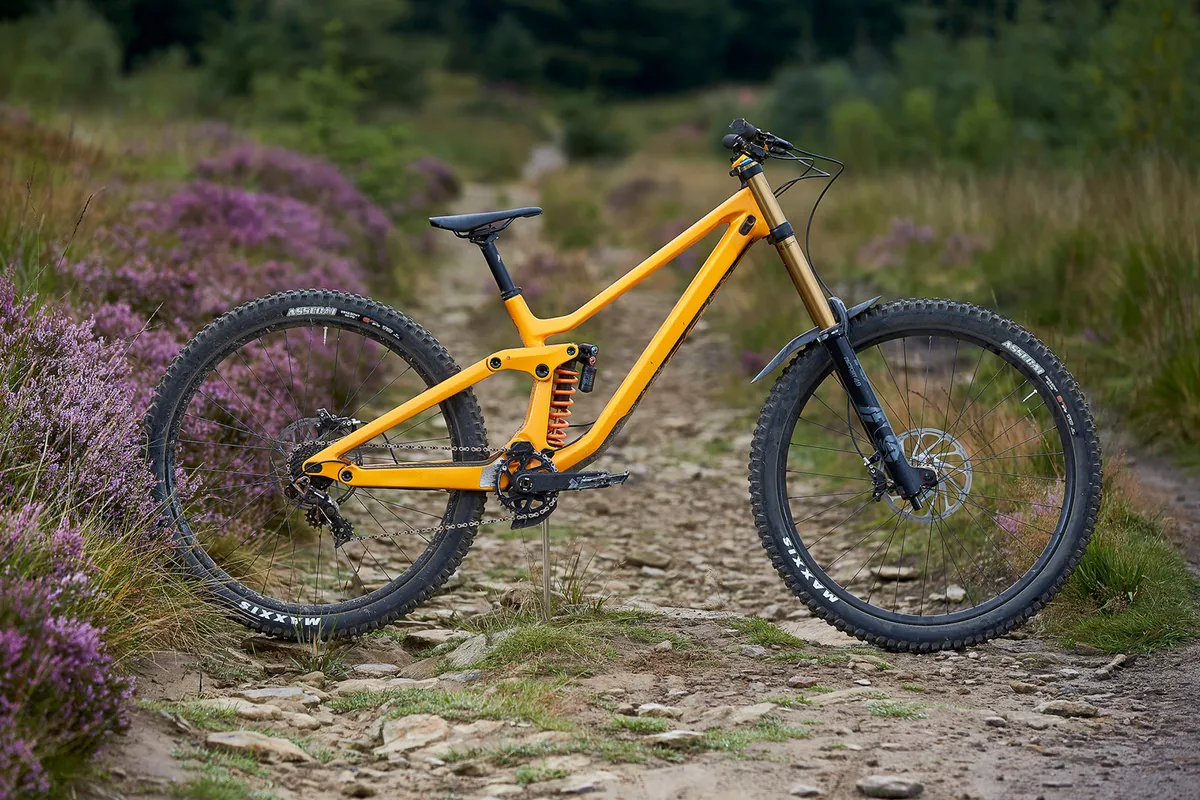
When designing the new Gambler, Scott set out with a pretty tight brief: the bike needed to be lighter than the outgoing model and they wanted to improve on-the-brakes suspension performance.
To do this, the newest Gambler is visually a hefty departure from the outgoing bike — gone is the high-ish single-pivot linkage-driven suspension, replaced by a Horst-link style rear-end that Scott says helps to increase suspension compliance under braking by reducing the anti-rise (read our in-depth guide to rear suspension systems to find out more).
But it does come as no surprise that all of its full suspension bikes now have an almost identical shape. Scott must truly believe that the Horst-link system is the best suspension out there.
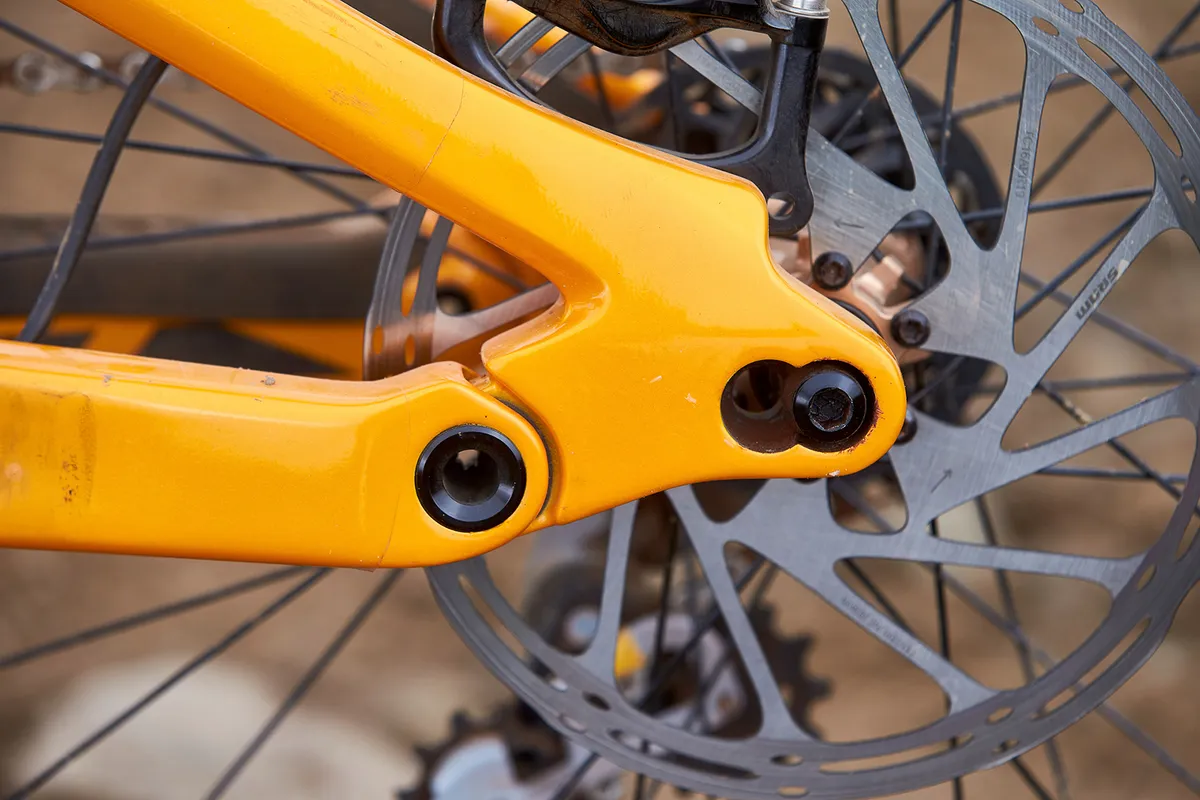
The bike’s also got multiple shock positions: a linear and more progressive setting and two bottom bracket height options – high and low. The wheelbase can also be adjusted at the chainstay from a short 435mm to a longer 450mm setting.
Add in headset angle adjuster cups and the bike’s got plenty that can be changed and modified to suit your specific needs and riding style.
Along with the adjustability, Scott also went to town trying to create a bike that’s got just the right amount of flex and stiffness in all of the right places — something it's been shouting about since the introduction in 2018 of the Ransom, its less burly sibling.
The bike’s also both 27.5in and 29in wheel compatible and you can run a mullet setup if you desire.
Scott Gambler 900 Tuned 2020 spec
Fitted with parts you’d expect to see on an €8,000 superbike, the Gambler 900 Tuned leaves you wanting for nothing.
The top-tier Fox Factory 49 forks and Fox DH X2 Factory rear shock are both present, although the rear-end uses a coil rather than air spring, hinting at the bike’s progressive kinematic.
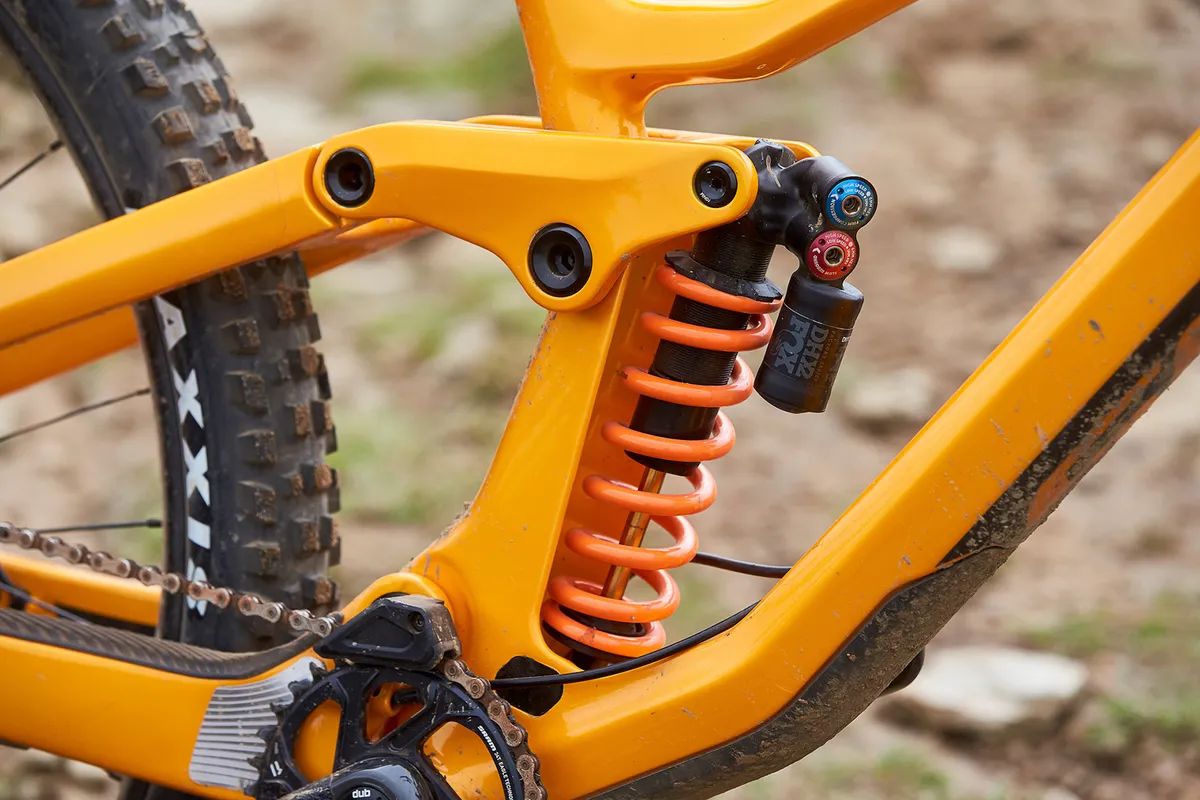
The rest of the bike gets a full complement of SRAM parts from Code RSC brakes to an X01 7-speed DH drivetrain and Greg Minnaar’s Maxxis Assegai tyres.
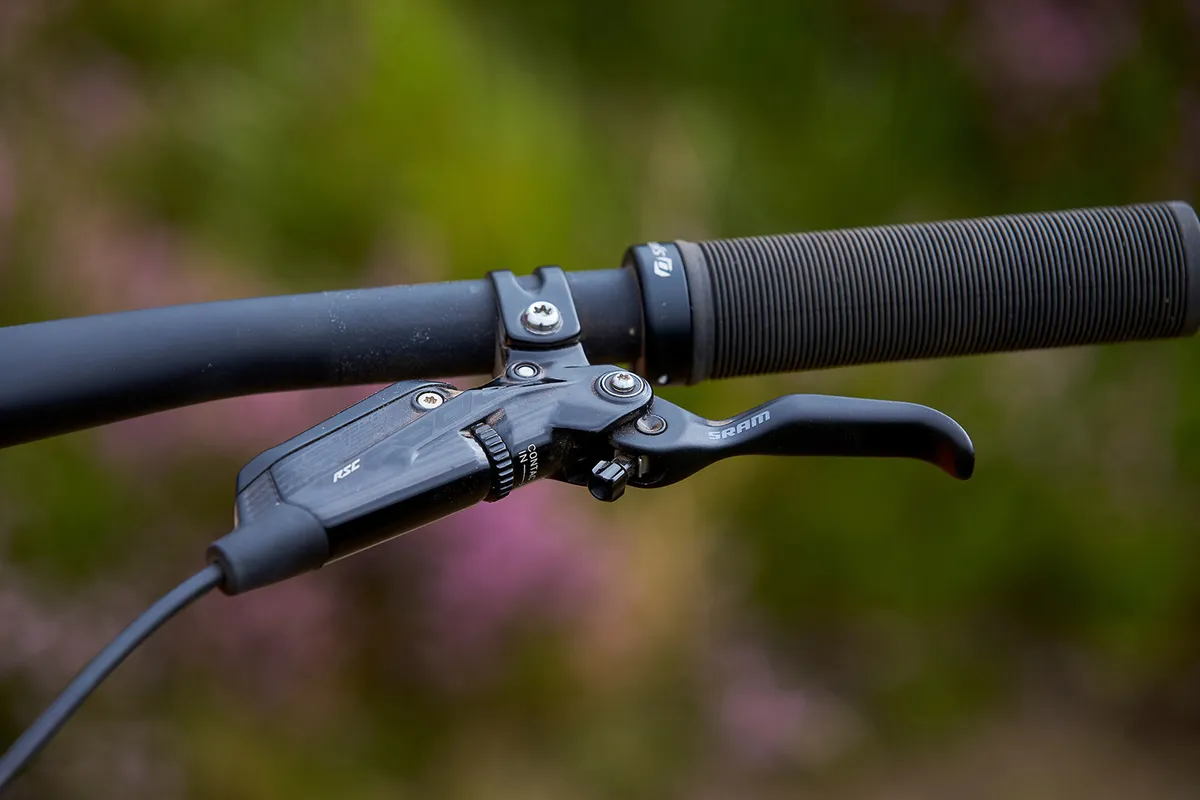
You’re also treated to the Hixon iC DH carbon combined bar and stem, which certainly divides opinion.
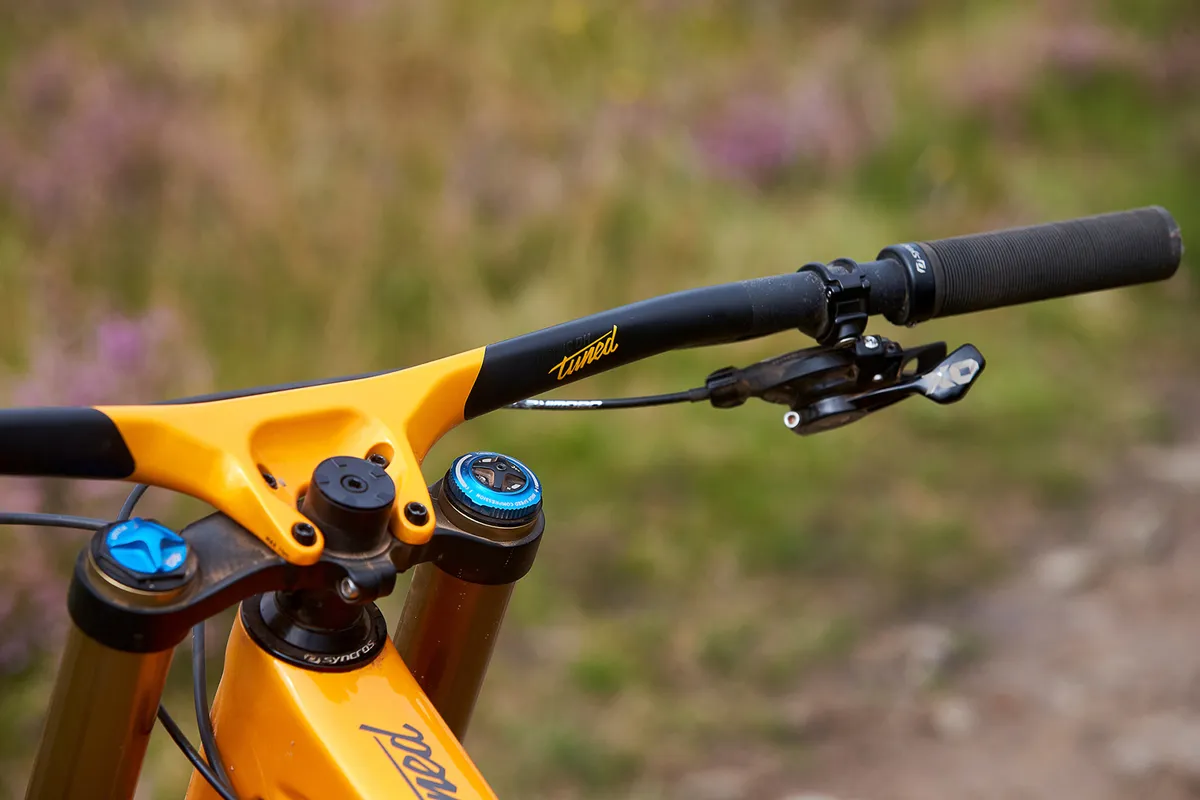
This headlining list of kit, carbon frame and general luxuriousness means the new Gambler 900 Tuned in a size large tips the scales at an impressive 15.7kg — lighter than quite a few enduro bikes out there.
Scott Gambler 900 Tuned 2020 set up
The bike was easy to set up, in part thanks to the stock rear spring being spot-on for my riding style and weight and to the fantastically tuneable X2 Factory rear shock, Fox 49 Grip2 damper and air cartridge. I just plugged in my preferred settings and away I went.
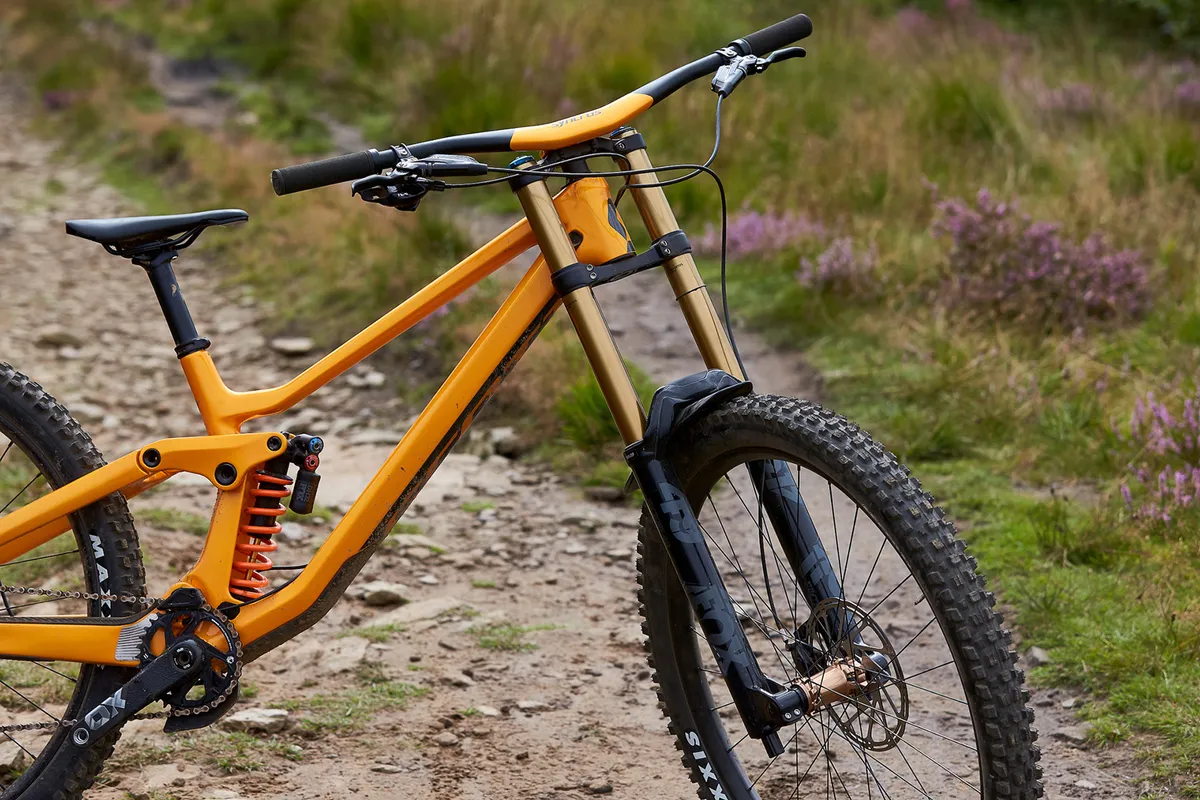
The stock fork steerer tube was long enough to allow for plenty of height adjustment, circumventing that frustrating feeling of not being able to get the bars high enough or even having the option of doing so.
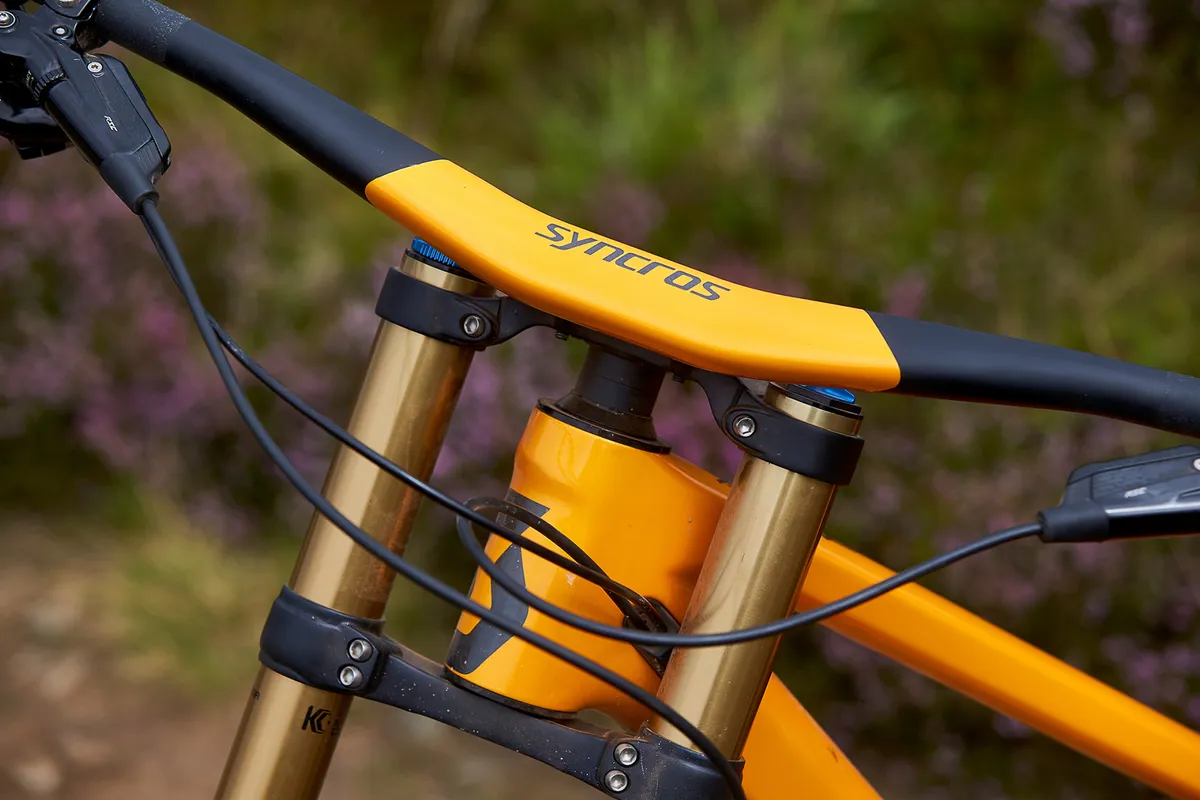
And the fixed Hixon bar and stem, which is directly mounted to the fork’s top crown, meant I didn’t need to worry about lining them up with the front wheel or adjust the bar roll. Very luckily, the Hixon bar’s shape, rise and roll seems to be perfect for my preferences.
The Assegai tyres were set up tubeless from the factory, so I pumped them up to my preferred pressures and, after checking at the end of the ride, I can confirm they didn’t leak air over the course of a day's testing. Although, when left in a shed for a week, the tyres did lose some air.
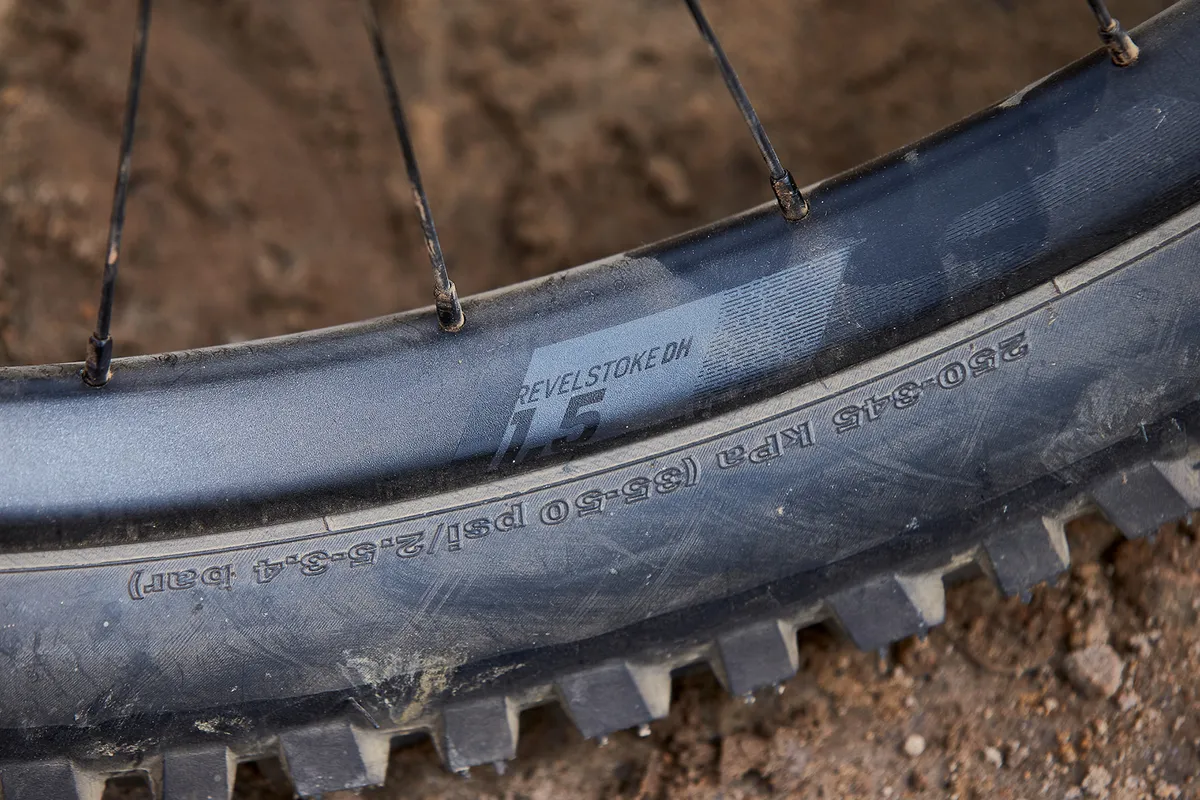
The Code RSC brakes have external adjustment for both lever reach and pad contact position, which makes getting the levers to sit in the optimal position for my particularly stumpy fingers a complete doddle.
Scott Gambler 900 Tuned 2020 ride impressions
On my first descent aboard the new Gambler it painted virtually indelible impressions of being a sure-footed, confidence-inspiring ride as well as being particularly speed-focussed. A monster in short, then.
This overarching feeling is strongest when the intensity of the terrain picks up — roots, rocks, steep sections and big jumps are eaten up by the Gambler’s insatiable appetite for tackling the gnarliest terrain at the highest speeds.
The bike’s fantastically balanced geometry – a modern 460mm reach figure, 1,272mm wheelbase and up to 450mm long chainstays – gives you plenty of room to move around on the bike and helps to reduce the effect the terrain has on the bike’s chassis, essentially making it harder for it to pitch back and forth. And even in the high setting, the handling on corners is excellent.
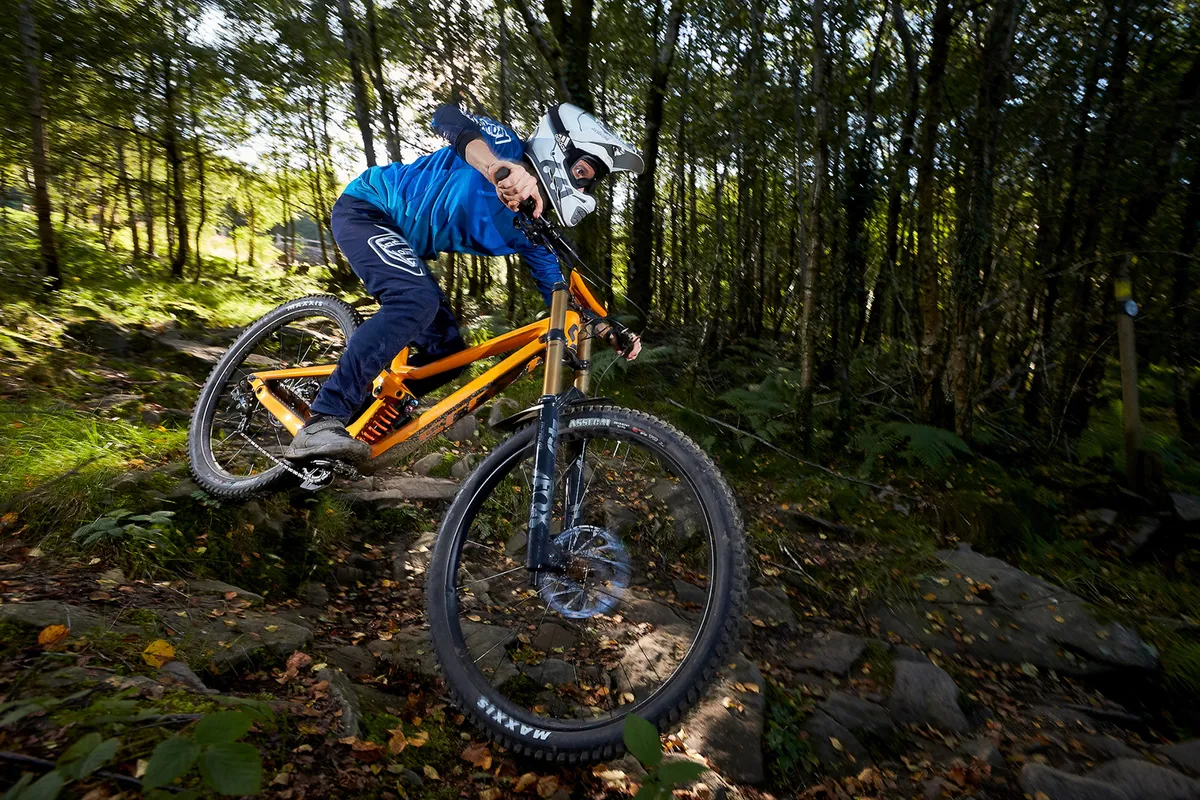
Rider inputs need to be deliberate to get the bike to change direction or angle up or down. This means that erroneous changes in body weight have a minimised effect on how the bike feels compared to a smaller or shorter bike.
The bike’s limits are well beyond what mere mortals are capable of, proven by the recent success of Brendan Fairclough and Marine Cabirou on the downhill World Cup scene.
The Fox suspension also helps to keep the bike securely within its depth because the damping remains particularly calm and composed when you’re going as fast as possible. There are no surprise kicks, bottom outs or otherwise and it’s possible to consistently push the bike hard.
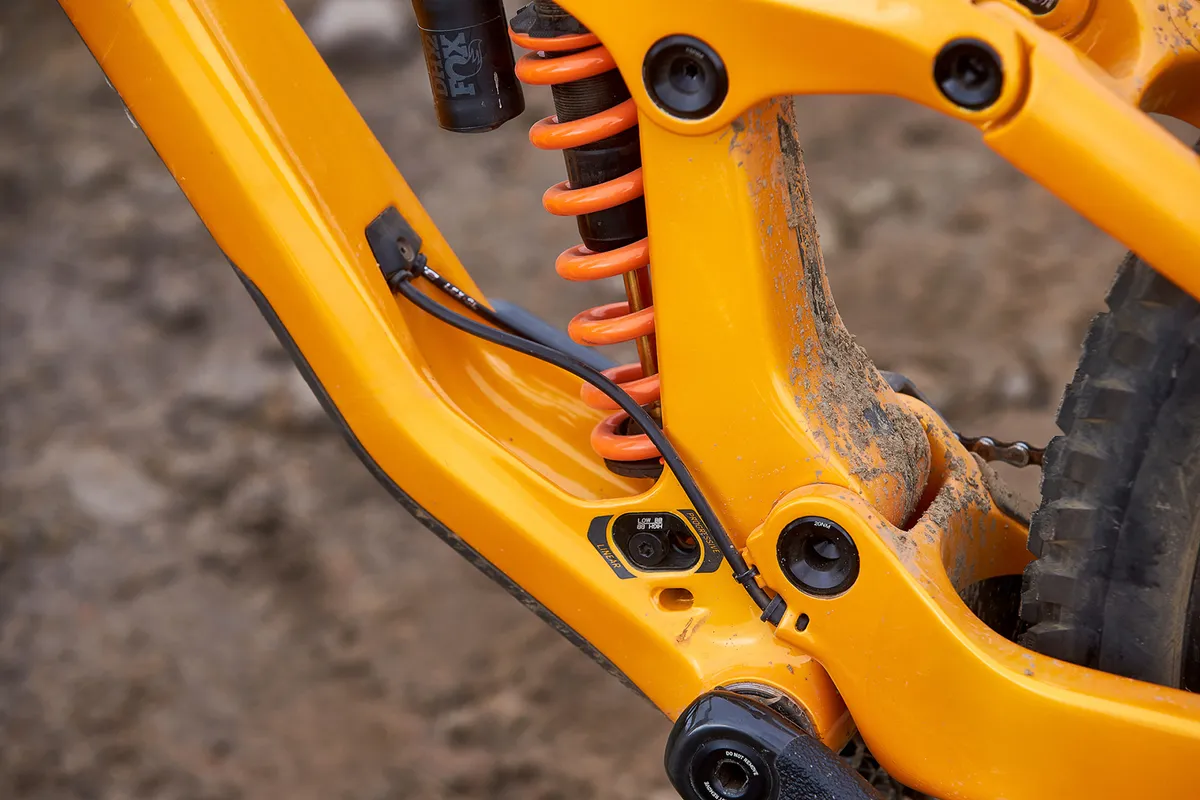
The suspension kinematics double down on the fork and rear shock’s ability to control unruly terrain. Rear-end small bump compliance is impressive, despite the axle path being slightly forward, and the bike handles repetitive, sharp, small hits with absolute ease even set in the linear mode.
The shock does emit a particularly high-pitched bark as you really pummel it through harsh hits, but this noise is accompanied with noticeable compliance as the bike tracks the ground with impressive accuracy.
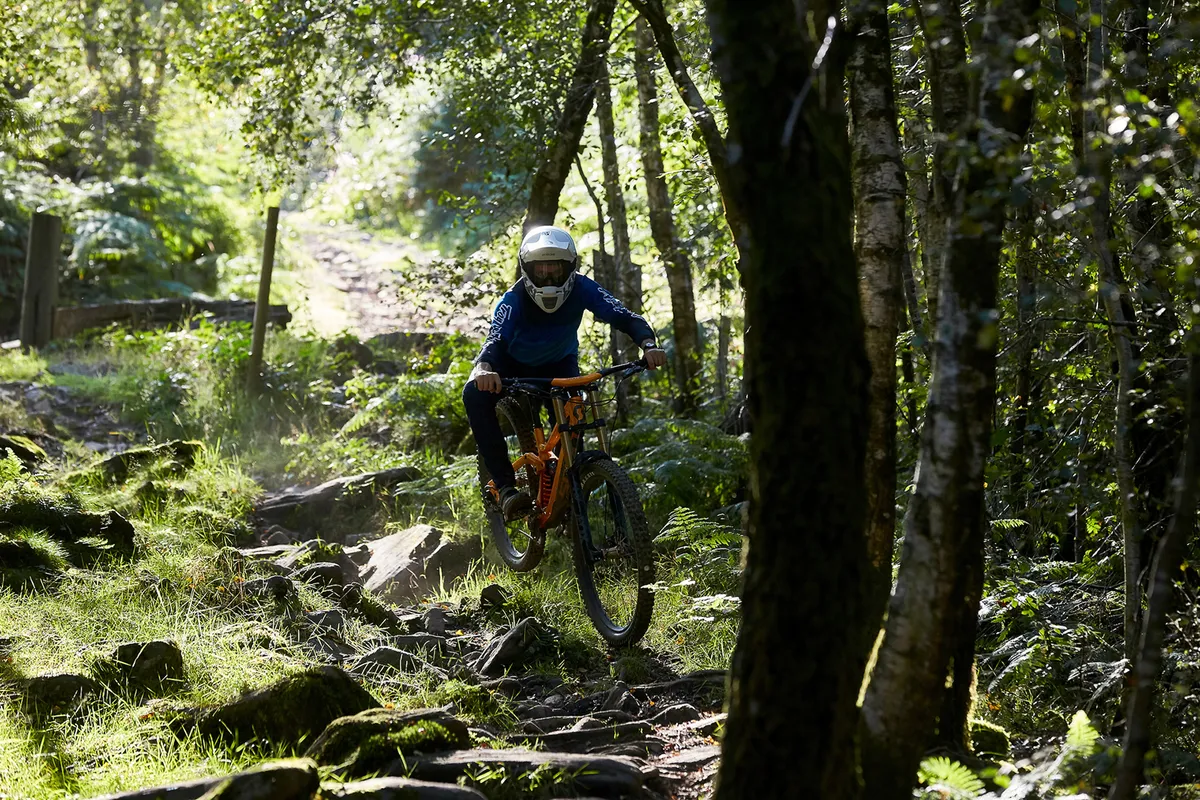
What’s equally as impressive is the way it also takes on medium and large hits without so much as breaking a sweat.
Power through a turn and the bike’s reluctant to rock rearwards into its travel as your weight shifts over the back wheel under the g-force. Likewise, hit a compression or push hard into a takeoff and there are no wallowing sensations. Instead, it’s all composed and settled action as the bike maintains its geometry, helping to stabilise the ride.
These feelings are accentuated in the progressive shock setting, so if you’re an absolute shredder the bike’s got plenty left in the tank for you to push your mettle.
Because of its impressive headline weight figure the bike picks up speed well even on very flat and rough terrain. Coupled with the particularly dialled suspension, the laborious task of making flat and awkward tracks flow becomes easier.
In particular, light bikes can be adversely influenced by the trail’s bumps, transferring the ground’s shape into the rider’s arms excessively. I didn’t find this to be the case with the Gambler, rather its weight made it easy to manipulate over the trail and pick lines without expending precious energy hauling extra lard around.
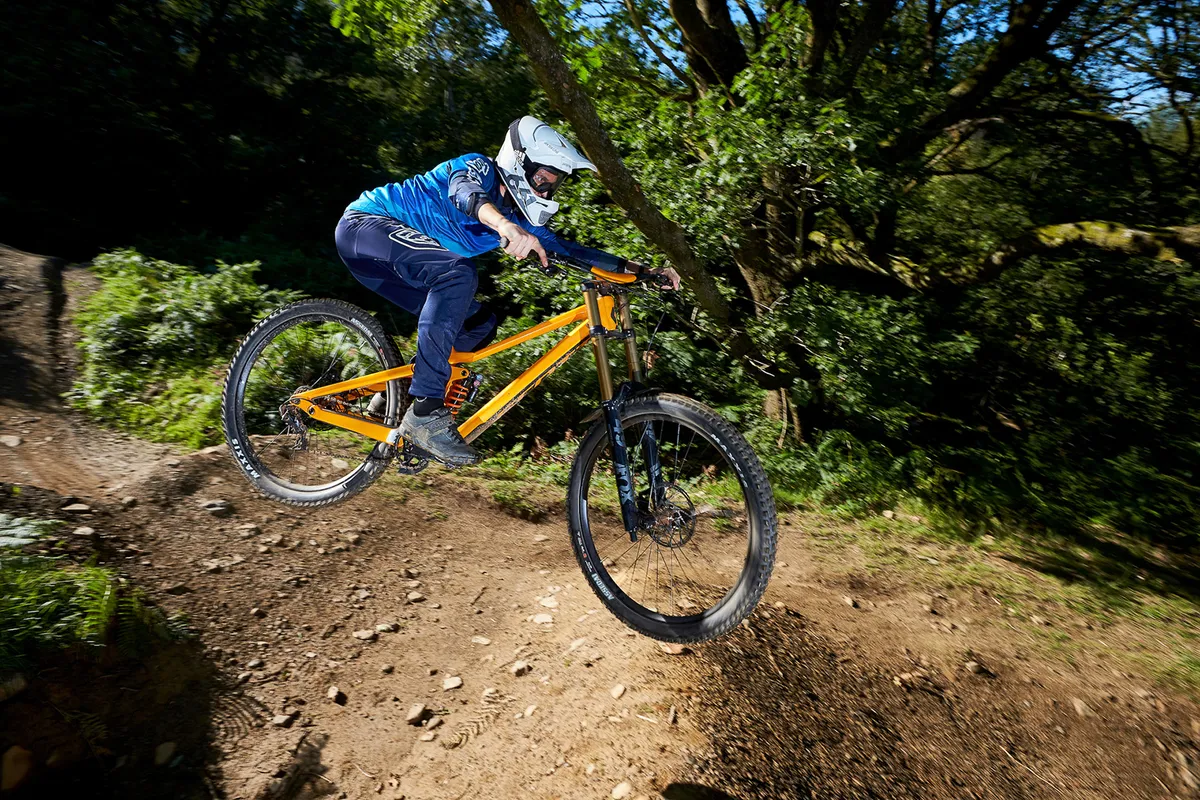
The choice to actively reduce the new Gambler’s anti-rise value from the outgoing model is a bit of an elephant in the room for me.
I enjoyed the way the old Gambler rode and was particularly fond of how it could handle the steepest tracks around without pitching my weight forwards as much as some bikes (the high anti-rise helped to maintain the bike’s geometry under braking) at the detriment of braking performance. But at least you could rely on the bike’s dynamic geometry changing less.
The new bike set out to undo this, instead prioritising suspension action under braking. And while I wanted to actively seek out problems with the way the new bike handled under harsh braking scenarios, I just couldn’t get it to pitch me forwards in an experience-crippling way.
Yes, the bike’s geometry did feel a bit less stable once I’d dropped the anchors, but the fork’s fantastic and easily-tuned, low-speed compression helped to support my weight as it shifted forwards when the rear end didn’t want to compress.
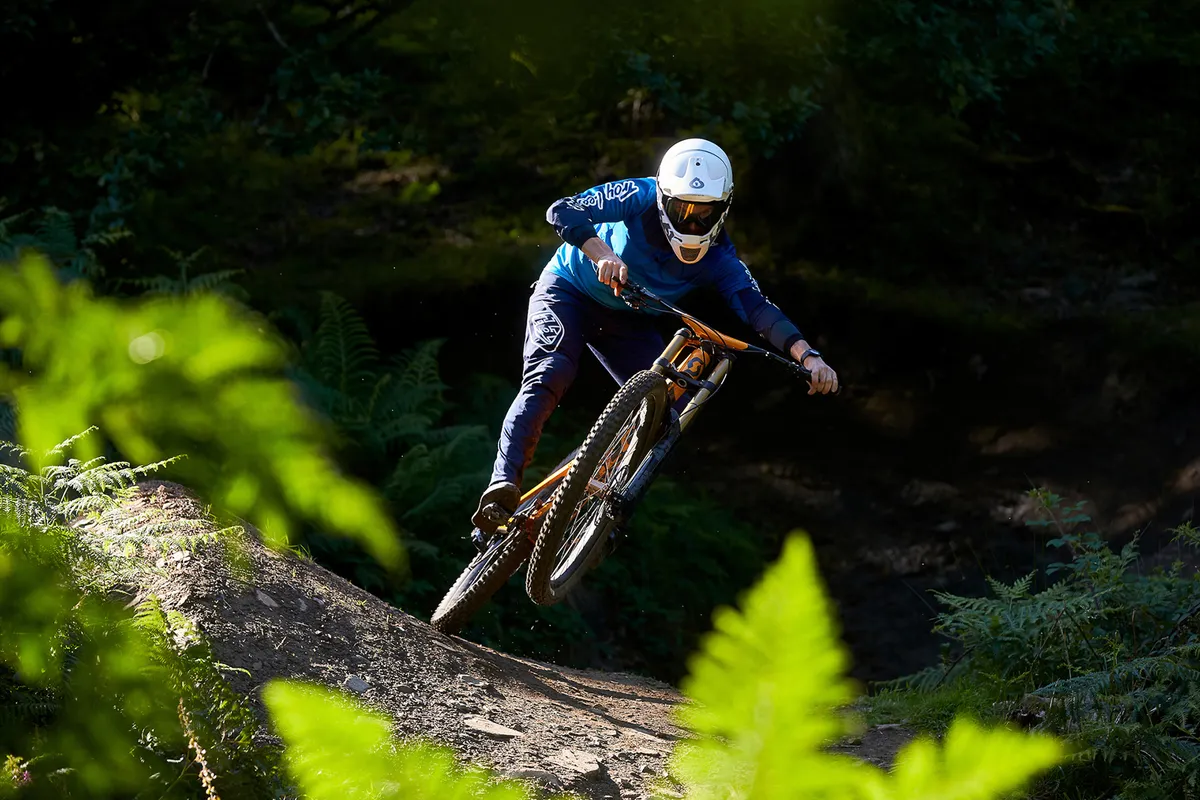
Despite a reduction in its anti-rise figure, I didn’t notice an improvement in how the bike’s suspension was working under braking.
Slowing through the rough, it was possible to make the back wheel feel like it was hitting into bumps, as if it was refusing to move out the way of them. Although this wasn’t as extreme as the old Gambler’s suspension under braking, it does beg the question: was it worth taking a risk with the anti-rise figures when it doesn’t seem like there’s an especially marked increase in on-the-brakes suspension compliance?
Clearly Brendan Fairclough and Marine Cabirou are better versed to answer that question than me, and their results speak for themselves, but personally, I’m not so convinced. That isn’t to say that this element of the bike’s ride is disastrously bad, it’s just different to the outgoing model and that’s something Scott wanted to achieve.

There was also something a bit funky going on with the front end of the bike. Initially, I thought the fork’s beginning stroke wasn’t supple enough, and instead of absorbing small bumps and trail buzz it was deflecting them directly into my hands.
I wasn't the only test rider to experience this and, after some puzzling, fiddling with air pressures in both the tyres and forks I’ve struggled to conclude what’s causing it. However, I’d happily put money on it being a combination of the particularly stiff Fox 49 fork, an aggressive compression damping tune and the Hixon iC DH bar.
I reckon with some setup changes, such as a particularly forgiving set of grips such as Renthal’s Push-Ons or detuning the spoke tension in the front wheel, this problem could be eliminated.
Scott Gambler 900 Tuned 2020 bottom line
An impressively capable, good looking, race-ready machine that manages do to 99 per cent of the things someone should be looking for in a downhill race bike.
Its recent release has been backed up by some impressive results on the World Cup circuit so it should be more than capable of any punishment us mere mortals can dish out.
It’s got some interesting setup quirks that could be easily ironed out, but let’s face it, at €8000 it comes as no surprise that the new Gambler is a great machine.
Product
| Brand | Scott |
| Price | €7999.00, £7199.00 |
| Weight | 15.70kg |
Features
| Fork | Fox 49 Factory, 203mm travel, Kashima stanchions, GRIP2 damper, 20mm Boost axle |
| Stem | Syncros Hixon iC DH carbon |
| Chain | KMC X11-1 |
| Frame | Carbon front and rear, Horst-link suspension, adjustable geometry, 12x157mm dropout, BB107, 27.5- and 29-inch wheels compatible |
| Tyres | Maxxis Assegai 29X2.5-inch, Kevlar bead, DH, TR, 3C Maxx Grip |
| Brakes | SRAM Code RSC, 200mm rotors (front and rear) |
| Cranks | SRAM X01 DUB, 34-tooth chainring, 165mm arm length |
| Saddle | Syncros Comox 1.5, titanium rails |
| Wheels | Syncros Revelstoke DH1.5, 32 spoke, tubeless ready |
| Headset | Syncros DH adjustable +/- 1-degree |
| Shifter | SRAM X01 7-speed |
| Cassette | SRAM CS PG-720 DH 11-25 teeth |
| Seatpost | Syncros DH1.5, 31.6 diameter |
| Grips/tape | Scott Syncros |
| Handlebar | Syncros Hixon iC DH carbon, 15mm rise, 8-degree sweep, 800mm wide |
| Rear shock | Fox DH X2 Factory, 225x75mm, 500lbs spring (size large) |
| Bottom bracket | SRAM DUB MTB107 |
| Available sizes | Small, medium, large, extra-large |
| Rear derailleur | SRAM X01 DH 7-speed |
| Front derailleur | Scott DH custom chain device |
